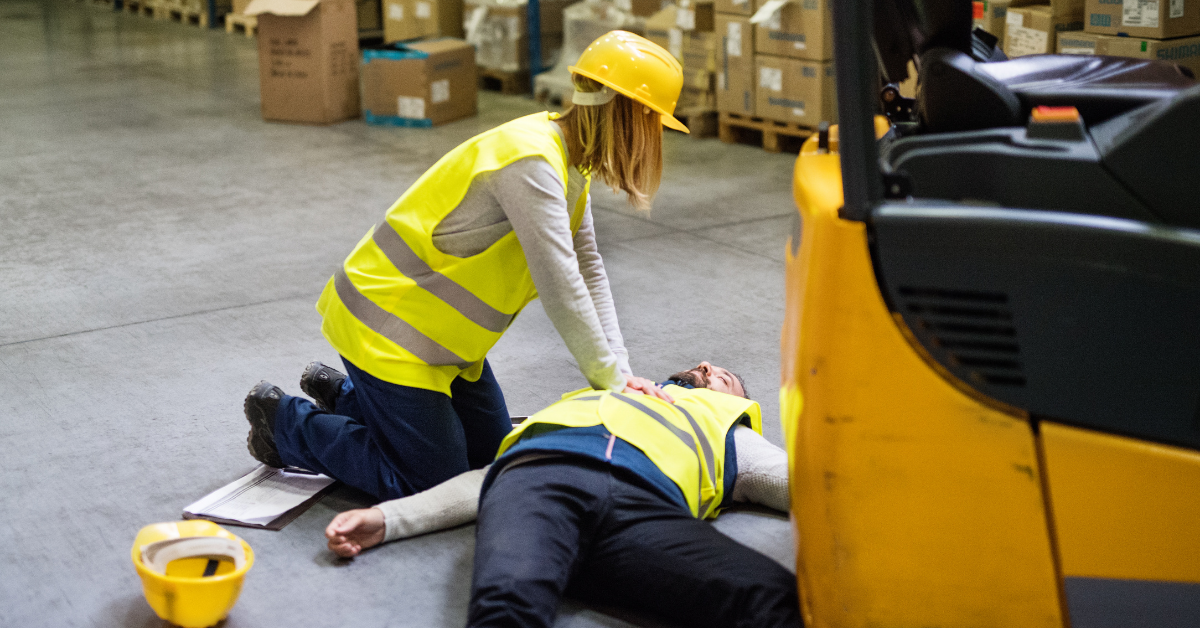Non-routine jobs are repetitive tasks that are performed infrequently. Since these jobs and/or tasks are not performed often, all of the hazards associated with the job can be easily overlooked.
To guarantee the health and safety of their employees, it’s in the best interest of business owners and employers to remain cognizant of the hazards of non-routine tasks. They need to put forth processes that accurately outline the expectations around the task to minimize the risk of injury.
What are Non-Routine Tasks?
Non-routine tasks are just that, various jobs that fall out of the norm of an employee’s day-to-day responsibilities.
These jobs can be something totally outside the capability of the worker to understand and perform properly. Or it can be a task that’s been added to their workload and is within their capabilities but is something they have never done before or haven’t been properly trained for.
Anything from annual inspections to rebuilding equipment to grounds maintenance can be considered a non-routine task if it falls outside of an employee’s normal job duties.
More often than not, the non-routine task is sandwiched in between all their normal responsibilities, and in cases when the task is something they haven’t been properly trained for, then it’s likely to result in an injury. This is usually due to the lack of familiarity, understanding, and appropriate training, as well as improper procedures, equipment, or process.
Why Are Non-Routine Tasks Hazardous?
Since non-routine tasks may have never been performed before or are not performed often, all of the hazards associated with the job can be easily overlooked.
Most injuries from non-routine tasks are the result of just not understanding the job or task, not being trained on how to perform it, or, quite simply, just not being properly prepared to do the job but attempting to do it anyway.
In some cases, workers may be asked to use tools and equipment they have never used, do not understand, and are not the correct tools for the job but they attempt to do the job anyway. We find this to be a cause of a significant number of injuries from non-routine jobs.
Injuries can occur when we do not take the time to think about the risks before beginning an unfamiliar task. Prior to performing non-routine work, it’s important to consider “what could go wrong” and the injuries that could result.
Having a well-thought-out and documented plan to perform tasks will help keep your employees safe. This seemingly simple thought process is almost always overlooked.
How to Prevent Hazards from Non-Routine Tasks?
It is important to identify hazards associated with non-routine tasks and develop a procedure to safely carry out the job. Understanding the risks associated with any task can go a long way in preventing injuries.
Even a simple “pre-job” meeting or evaluation by all parties to ensure the task is understood can go a long way in determining whether employees are capable of performing the task. This kind of discussion also helps to answer the question of whether they have the right tools for the job.
It is surprising how many times a worker is injured because they do not fully understand the tasks at hand, or because they attempt to use tools and equipment that are not right for the job.
We find that, for non-routine jobs of any size or consequence, a work plan meeting before the job is even started can go a long way to the efficient execution of the job, done well, safely, and accomplished on time.
If all the vested parties can discuss the job, all views and perspectives can be considered so that proper tools and work practices can be implemented in the first place.
Since unsafe acts and unsafe work practices are responsible for over 95% of workplace injuries, proper planning for a job can be a significant part of minimizing the chances of an injury due to those acts and behaviors. Following the right procedures and having the “right tools for the job” are critically important to the completion of a job safely.
How a Job Hazard Analysis (JHA) Can Make Your Workplace Safer
A Job Hazard Analysis (JHA) is the standard method to identify and address risks in any task. The purpose of a JHA is to create a safer work process by breaking a task down into basic steps, analyzing those steps for risks, and developing methods to eradicate those risks.
But there is something that prevents JHAs from being successful, and that is that they are rarely ever performed in most companies. Also, those who would perform them are generally not necessarily skilled in hazard recognition. They may not be familiar with what even constitutes a hazard since in most cases, hazards are created by the individual and not the job itself.
Standard Operating Procedures (SOPs) rarely ever exist for non-routine jobs. When they do, these SOPs are often devised from a JSA, and the margin for human error was not taken into consideration. Therefore, the fundamental problem with the performance of a JHA is that those doing the JSA tend to focus on the equipment or machinery being used, if even that, with little thought given to the training (or lack thereof).
The number of injuries we see as the result of an inadequate or non-existent JSA is significant, largely based on this problem.
If a JSA is to be performed, it should be completed by an experienced safety person that understands the potential for things to go wrong. An effective JSA will also include the individuals who are intended to perform the task, so their competency and process can be accurately evaluated.
To learn more about putting together a JHA for your non-routine tasks, contact The Lawson Group. At The Lawson Group, our primary effort is to partner with employers and their employees to create better, safer, and healthier working environments. We welcome your inquiries regarding our services.







